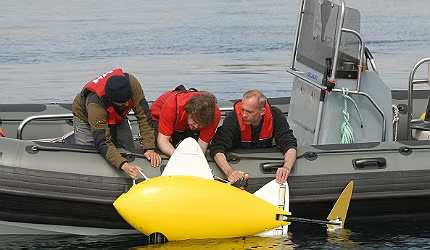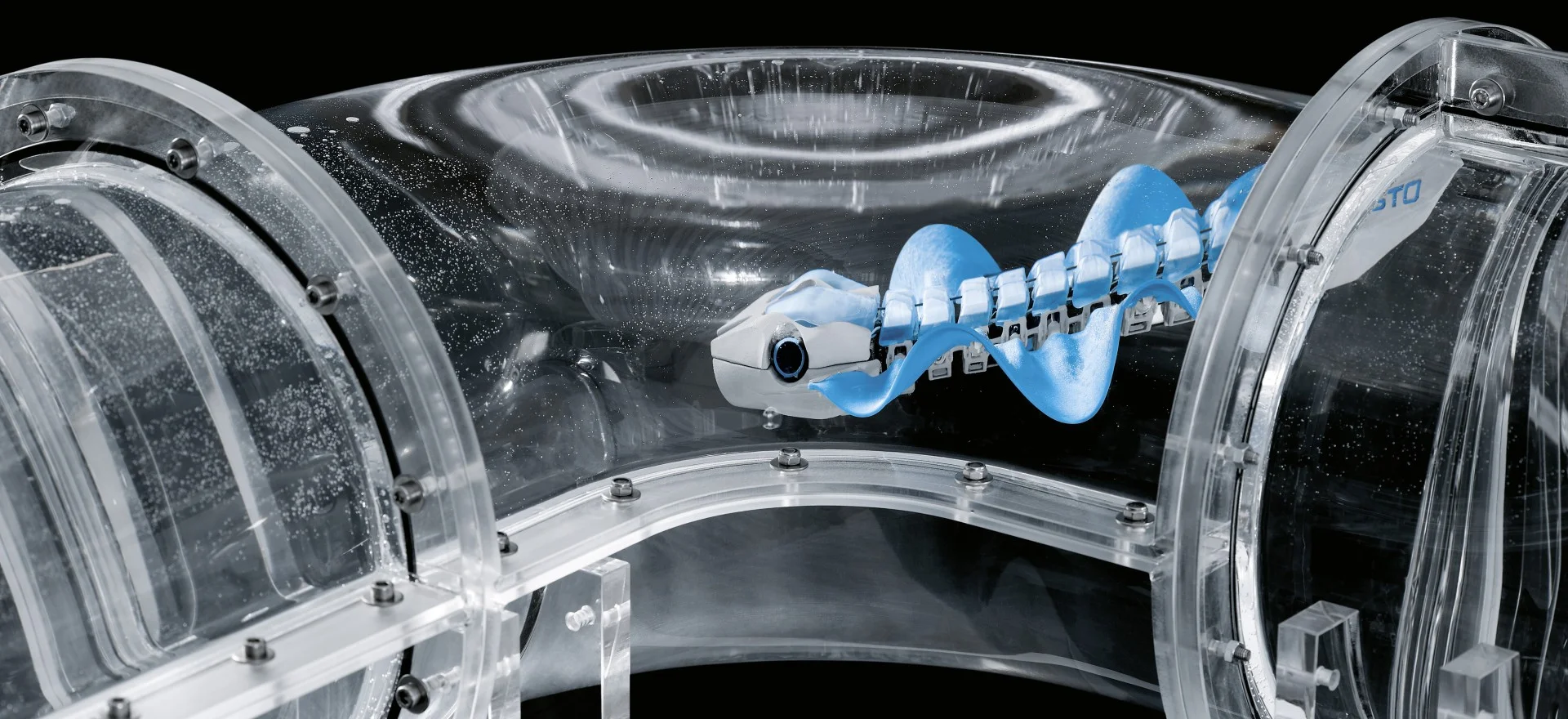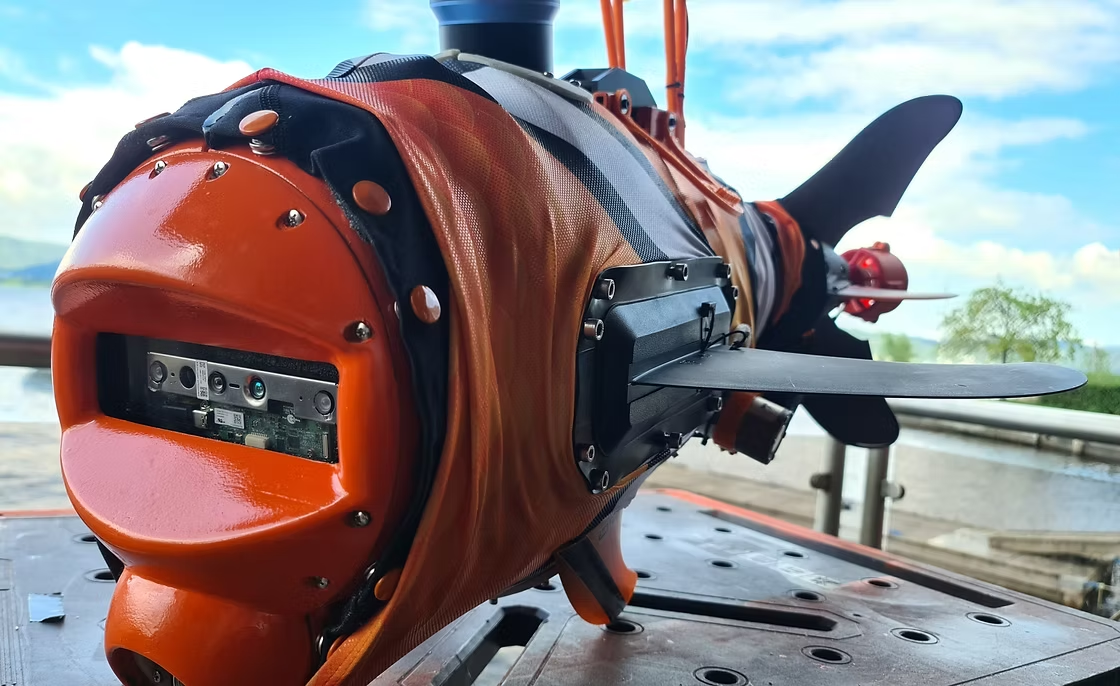Real Fish vs. Robotic Fish: Exploring the Frontier of Ecological Monitoring and Conservation
- Sparknify

- Jun 10, 2025
- 4 min read
Updated: Jul 5, 2025
In an era defined by rapid technological progress, innovations increasingly blur the boundaries between nature and technology. A groundbreaking example emerges from China, where researchers from Wuhan University have introduced a remarkable robotic fish into the waters of the Yangtze River. While this advanced machine doesn't exactly pit human intelligence against artificial intelligence, it intriguingly sets up a comparison of "Real Fish vs. Robotic Fish," resonating deeply with Sparknify's "Human vs. AI" discussions about the broader implications of automation and technology in our world.

A Revolutionary Tool for River Conservation
The bionic robotic fish developed at Wuhan University has been designed explicitly for river conservation and environmental monitoring. Equipped with sophisticated sensors, it swims among its biological counterparts, mimicking their movements to blend seamlessly into the aquatic environment. Its mission? To continuously collect vital data on water quality, identify pollutants, and offer detailed assessments of ecological health.
Unlike stationary monitoring equipment or traditional sampling methods that may disturb wildlife, these robotic fish operate unobtrusively, swimming autonomously through rivers and streams. They collect real-time data on contamination levels, enabling researchers to quickly pinpoint and respond to environmental threats.
Advanced Robotic Technologies at Play
These robotic fish showcase a confluence of state-of-the-art technologies, including obstacle avoidance, advanced propulsion systems that replicate realistic swimming patterns, and sophisticated sensors capable of detecting even minute traces of pollutants. Additionally, the embedded artificial intelligence allows these robotic swimmers to learn from their surroundings and adapt their navigation strategies accordingly, a crucial capability in the dynamic environments of rivers like the Yangtze.

Tech Startups Leading Robotic Fish Innovation
Several innovative tech startups globally are also making significant strides in robotic fish technology:
Aquaai (USA): Aquaai develops biomimetic robotic fish specifically for marine conservation and monitoring of delicate ecosystems like coral reefs and coastal regions. These robotic fish collect crucial environmental data, enabling proactive management of marine habitats. Their applications include biodiversity assessments, pollution monitoring, and tracking marine life behaviors. The broad implementation of Aquaai’s technology could significantly advance global marine conservation efforts, ensuring healthier oceans and more resilient ecosystems.
BMT (UK): BMT specializes in autonomous marine vehicles, including robotic fish that serve military and environmental monitoring roles. Their technology enables discreet underwater surveillance and extensive environmental data collection, helping authorities better understand oceanic and coastal ecosystems, predict ecological threats, and enhance maritime security. Future widespread adoption of BMT’s robotic fish could bolster global environmental management and maritime safety.
Festo (Germany): Festo’s AquaJelly robotic fish incorporates cutting-edge soft robotics and energy-efficient propulsion methods to replicate natural swimming patterns precisely. AquaJelly is utilized for educational and research purposes, helping scientists understand marine life behaviors and interactions in greater detail. Furthermore, this technology could inspire future robotic designs in various industries, from underwater infrastructure inspections to sophisticated search-and-rescue operations.
Real Fish vs. Robotic Fish: Coexistence or Competition?
Deploying robotic fish within natural ecosystems raises fascinating questions: How will real fish respond to their mechanical counterparts? Early observations suggest minimal disturbance, with real fish showing remarkable acceptance of robotic fish due to their lifelike movements and appearance. Such integration points toward a future where technology and biology coexist symbiotically rather than competitively.
However, this delicate balance also challenges our perception of nature. As robotics advance, how much intervention is too much? Are we inadvertently training wildlife to accept artificial entities as part of their ecosystems, and what long-term effects might this have on animal behavior and ecological interactions?
Sparknify’s Conceptual Implications: Redefining Nature
This intersection of real and robotic life aligns closely with Sparknify's Human vs. AI theme, highlighting critical issues of authenticity, control, and coexistence. It forces us to reconsider our definitions of nature and artificiality. As we embrace robotic fish for conservation, we confront ethical and philosophical questions about our role as stewards of the environment. How do we ensure these technologies enhance natural processes rather than disrupt them?
The Future of Environmental Monitoring and Beyond
The successful deployment of robotic fish in China's Yangtze River signifies just the beginning. Imagine a world where similar robotic entities monitor oceans, lakes, and waterways globally, detecting and mitigating environmental threats in real time. These robots could become invaluable allies in preserving biodiversity, supporting endangered species, and providing critical data for global ecological strategies.

Moreover, advancements in robotics suggest broader applications beyond environmental monitoring. From agriculture and fisheries management to emergency response during natural disasters, these versatile robotic swimmers could redefine human interactions with the natural world, creating safer and more sustainable environments.
Recommendations and Considerations for Future Deployments
As we move forward, thoughtful deployment strategies will be essential. Collaboration between technologists, ecologists, ethicists, and policymakers is crucial in ensuring robotic fish enhance rather than compromise ecosystems. Robust ethical frameworks and regulatory oversight should accompany technological developments to maintain balance and biodiversity.
Educational initiatives can further help the public understand and appreciate the benefits and limitations of robotic interventions in nature, preparing society for future shifts in how we perceive and interact with the natural world.
The robotic fish from Wuhan University illustrates the extraordinary potential—and the profound responsibility—that comes with technological innovation. As we navigate the "Real Fish vs. Robotic Fish" landscape, we're reminded of the necessity to harmonize technological progress with ecological wisdom.
Ultimately, Sparknify’s Human vs. AI narrative encourages reflection on the delicate balance between embracing advanced technologies and preserving the integrity of the natural world. By thoughtfully integrating robotics into ecological conservation, we can ensure a sustainable and balanced future, benefiting both humanity and nature alike.


















Comments